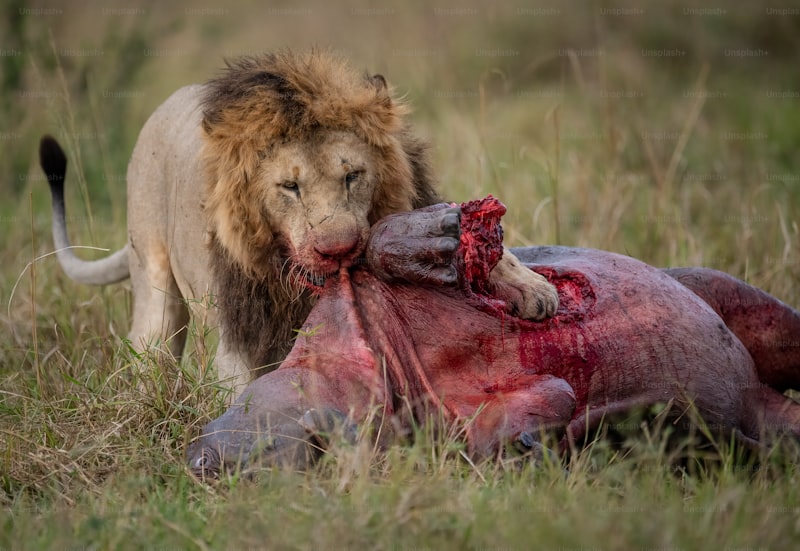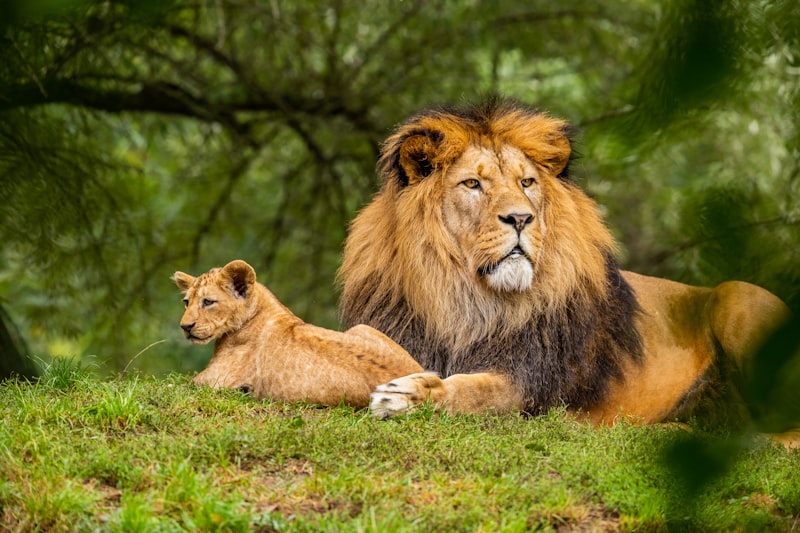Imagine a world where majestic elephants roam freely, their ivory tusks untouched by greed-driven poachers. Sadly, the reality is starkly different. Poachers relentlessly hunt these gentle giants for their tusks, which fetch exorbitant prices in illegal markets. The result? Decimated elephant populations and fragmented habitats, pushing these animals closer to extinction.
Similarly, rhinos face a dire fate due to the demand for their horns, falsely believed to possess medicinal properties in some cultures. This misconception fuels an illegal trade network that spans continents, involving sophisticated criminal syndicates. Despite bans and conservation efforts, rhino populations dwindle, their survival hanging by a thread.
The impact of wildlife crime extends beyond individual species. It undermines ecosystems by destabilizing natural balances and threatening biodiversity. Animals are not the only victims; local communities that depend on wildlife tourism suffer economic losses when iconic species disappear.
Efforts to combat wildlife crime require global collaboration and innovative solutions. From strengthening law enforcement to raising public awareness, the battle against poaching and illegal trade demands a multi-faceted approach. Conservationists, governments, and concerned citizens must unite to protect our planet’s precious wildlife from the grips of exploitation and greed.
Undercover Operations Unveil Global Wildlife Trafficking Networks
At the heart of these operations lie the poachers, elusive figures skilled in navigating the wilderness and exploiting its inhabitants. Armed with snares, traps, and sometimes even tranquilizer guns, they target exotic species ranging from elephants and rhinos to rare birds and reptiles. These creatures, prized for their rarity and perceived medicinal or status-enhancing properties, fetch staggering sums on the black market.
But it’s not just the poachers who play a role in this nefarious trade. Handlers, often operating under the guise of legitimate businesses, launder trafficked animals and their parts through a labyrinth of channels. From forged permits to hidden compartments in shipping containers, traffickers employ various tactics to evade law enforcement and border controls.
The demand for wildlife products drives this underground economy, fueled by a clientele ranging from collectors of exotic pets to buyers seeking traditional medicines. In some cultures, certain animal parts are believed to possess healing properties or are valued as status symbols, perpetuating the demand despite international bans and conservation efforts.
Undercover agents, posing as buyers or traders, infiltrate these networks to gather intelligence and build cases against key figures. Their work is perilous, requiring not only deception but also a deep understanding of the intricate networks that operate across borders and jurisdictions.
The fight against wildlife trafficking is a race against time and ingenuity. Conservationists, law enforcement agencies, and advocacy groups collaborate to disrupt these networks, employing tactics as diverse as DNA tracking and aerial surveillance. Yet, the challenge persists, as traffickers adapt to new technologies and exploit regulatory loopholes.
As the world becomes more interconnected, so too does the battle to protect endangered species. Each successful operation brings hope, yet the shadowy nature of wildlife trafficking ensures that the fight remains as elusive as the creatures it seeks to save.
Poaching Crisis: Endangered Species Face Extinction Threat
The scale of poaching is staggering. Each year, thousands of elephants are slain for their ivory tusks, which fetch exorbitant prices on the black market. Similarly, rhinos are hunted for their horns, believed to have medicinal properties in some cultures despite scientific evidence to the contrary. These activities not only devastate populations but disrupt entire ecosystems where these animals play crucial roles.
The consequences of poaching extend beyond just the animals themselves. It threatens local communities that rely on eco-tourism for their livelihoods. When iconic species disappear, so do opportunities for sustainable development and economic growth.
Efforts to combat poaching are underway, but the battle is uphill. Conservation organizations work tirelessly to protect vulnerable species through increased patrols, community engagement, and advocacy for stronger laws. However, the challenge persists due to the lure of quick profits and the difficulty of patrolling vast wilderness areas.
The situation calls for global solidarity and action. Governments, NGOs, and concerned citizens must collaborate to strengthen enforcement, reduce demand for illegal wildlife products, and support sustainable alternatives for communities affected by poaching.
Illegal Wildlife Trade Soars Despite International Crackdowns
One of the main challenges in combating illegal wildlife trade is its clandestine nature. Traffickers operate covertly, exploiting gaps in law enforcement and crossing international borders with ease. This illicit activity not only threatens biodiversity but also destabilizes ecosystems and undermines conservation efforts worldwide.

The demand for wildlife products remains a primary driver of this illegal trade. Whether it’s the allure of owning exotic pets or the belief in the medicinal properties of animal parts, consumers perpetuate a cycle of demand that fuels poaching and trafficking. Despite growing awareness of the environmental and ethical consequences, the desire for rare and exotic items persists.
Efforts to combat illegal wildlife trade are multifaceted. International organizations, governments, and NGOs collaborate to strengthen laws, increase enforcement, and educate communities about the importance of wildlife conservation. While progress has been made in some areas, the vast scale of the problem requires sustained commitment and innovative strategies.
Countries with high biodiversity, such as those in Africa and Southeast Asia, are often hotspots for wildlife trafficking. Poachers target iconic species like elephants, rhinos, and big cats, pushing these animals closer to extinction. The interconnected nature of global markets means that even species in remote regions are at risk of exploitation.
Inside the Black Market: The Lucrative Business of Wildlife Smuggling
From the dense jungles of Southeast Asia to the bustling markets of Africa, wildlife traffickers operate covertly, exploiting vulnerable species for financial gain. Rare and endangered creatures, from majestic tigers to delicate sea turtles, are snatched from their natural habitats or bred in captivity under appalling conditions. Their journey through the black market is fraught with cruelty and danger, as they are smuggled across borders concealed in cramped compartments or disguised within legal shipments.
The demand for wildlife products is insatiable, driven by traditional medicine, luxury goods, and exotic pets. Rhino horns, prized for their supposed medicinal properties, command prices higher than gold, while exotic birds and reptiles fetch exorbitant sums in the pet trade. This relentless demand fuels a cycle of exploitation and endangerment, pushing numerous species closer to extinction.
Law enforcement agencies worldwide battle tirelessly against wildlife trafficking, seizing contraband shipments and dismantling smuggling rings. Yet, the clandestine nature of the trade presents formidable challenges, with traffickers employing sophisticated methods to evade detection. Corruption, porous borders, and inadequate penalties further complicate efforts to curb this illicit trade.
The impact of wildlife trafficking extends beyond environmental devastation. It undermines global biodiversity, threatens fragile ecosystems, and destabilizes communities reliant on sustainable natural resources. Efforts to combat this crisis require international collaboration, stringent enforcement of laws, and robust public awareness campaigns to reduce demand and protect endangered species for future generations.
Safari Slaughter: How Poachers Target Africa’s Iconic Wildlife
Africa’s wildlife, renowned for its diversity and majesty, faces a grave threat from poachers who ruthlessly target these iconic species. From elephants with their majestic tusks to rhinos with their distinctive horns, these animals are hunted relentlessly, driven by the illegal wildlife trade that values their body parts for supposed medicinal or ornamental purposes.
Poachers operate stealthily, often under cover of darkness, equipped with sophisticated weaponry that enables them to evade authorities and strike deep into protected areas. Their methods are as varied as they are devastating: from high-powered rifles to deadly traps, poachers stop at nothing to secure their prize, leaving behind a trail of destruction and sorrow.
The impact of poaching extends far beyond the immediate loss of individual animals. It disrupts entire ecosystems, destabilizing natural balances and threatening the survival of other species dependent on the targeted wildlife. For instance, the decline of elephants due to poaching affects not only their own population dynamics but also disrupts vegetation patterns crucial for other herbivores.
Efforts to combat poaching are multifaceted but often face significant challenges. Conservationists employ a combination of technology, such as drones and satellite tracking, alongside community engagement and law enforcement to protect wildlife. However, the vastness of the African wilderness and the lucrative nature of the illegal wildlife trade continue to pose formidable obstacles.
The plight of Africa’s wildlife underscores the urgent need for global cooperation and heightened awareness. Responsible tourism, which supports conservation efforts and local communities, offers a sustainable alternative to poaching. By choosing ethical wildlife experiences and supporting conservation organizations, travelers can contribute directly to safeguarding Africa’s natural heritage for future generations.
As we navigate the complex terrain of wildlife conservation, each action—no matter how small—can make a difference. Together, we can strive towards a future where Africa’s iconic wildlife roams freely and safely, enriching our planet with their presence and resilience.
From Forests to Markets: Tracking the Path of Illegally Trafficked Wildlife
The journey begins deep within lush forests where poachers prey on vulnerable species. Armed with traps and snares, they target animals prized for their rarity or perceived medicinal value. This initial step sets off a chain reaction, disrupting ecosystems and endangering biodiversity.
Once captured, wildlife faces harrowing journeys through underground networks of traffickers. Routes weave through remote regions, often crossing borders with ease due to inadequate enforcement. Traffickers exploit legal loopholes and corruption, evading authorities to reach lucrative markets.
In bustling urban centers and shadowy online platforms, trafficked wildlife finds its buyers. These markets thrive on consumer demand for exotic pets, traditional medicines, and ornamental products. Rare animals and their parts fetch high prices, fueling a cycle of exploitation and endangerment.

Efforts to combat wildlife trafficking are multifaceted, involving international cooperation, law enforcement, and conservation initiatives. From deploying wildlife task forces to strengthening legal frameworks, global efforts aim to dismantle trafficking networks and protect endangered species.
Understanding the journey from forests to markets is crucial in combating this illicit trade. It highlights the need for sustainable practices, community engagement, and consumer awareness to safeguard wildlife and preserve ecosystems for future generations.
Frequently Asked Questions
How does illegal wildlife trade impact ecosystems?
Illegal wildlife trade disrupts ecosystems by depleting populations of key species, leading to imbalances in food chains and ecosystems. This activity threatens biodiversity, disrupts habitats, and can spread diseases, impacting both wildlife and human populations.
What are the most trafficked wildlife species?
Discover the most trafficked wildlife species globally with our concise FAQ. Learn about endangered animals impacted by illegal trade and how conservation efforts are crucial in protecting their survival.
What is wildlife crime and why is it a concern?
Wildlife crime refers to illegal activities that harm or exploit wildlife, such as poaching, trafficking, and habitat destruction. It is a significant concern due to its devastating impact on biodiversity, ecosystems, and endangered species. Addressing wildlife crime is crucial for conservation efforts and maintaining ecological balance.
What are the global efforts to combat wildlife crime?
Discover global efforts aimed at combating wildlife crime, including international agreements, law enforcement collaborations, and conservation initiatives. Learn about strategies to protect endangered species and preserve biodiversity worldwide.
How can poaching be prevented?
Learn effective strategies to prevent poaching with our concise guide. Discover key methods such as increasing law enforcement presence, implementing stricter penalties, promoting community involvement, and supporting sustainable livelihoods. Take action today to protect wildlife and preserve biodiversity.


